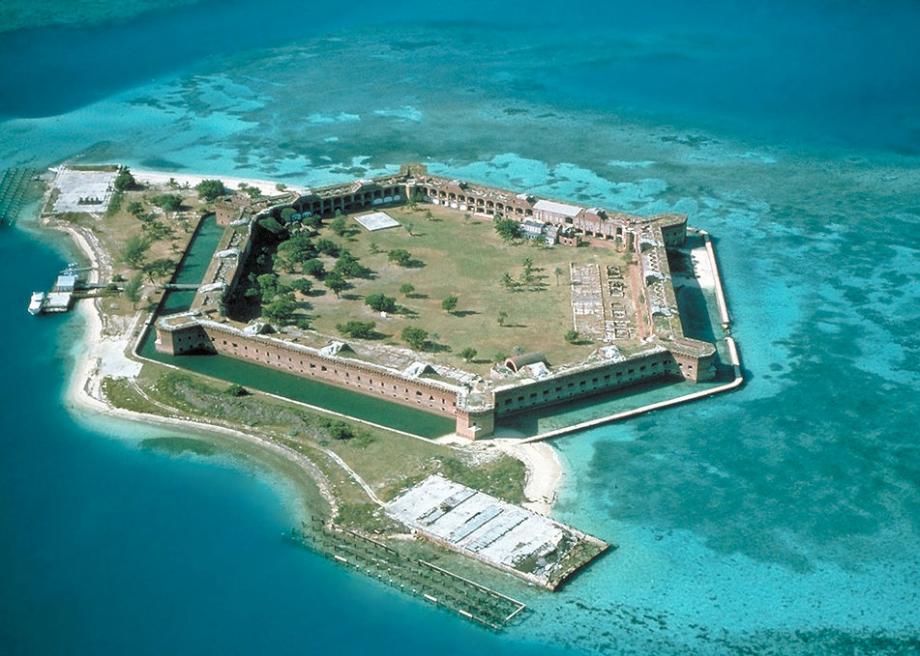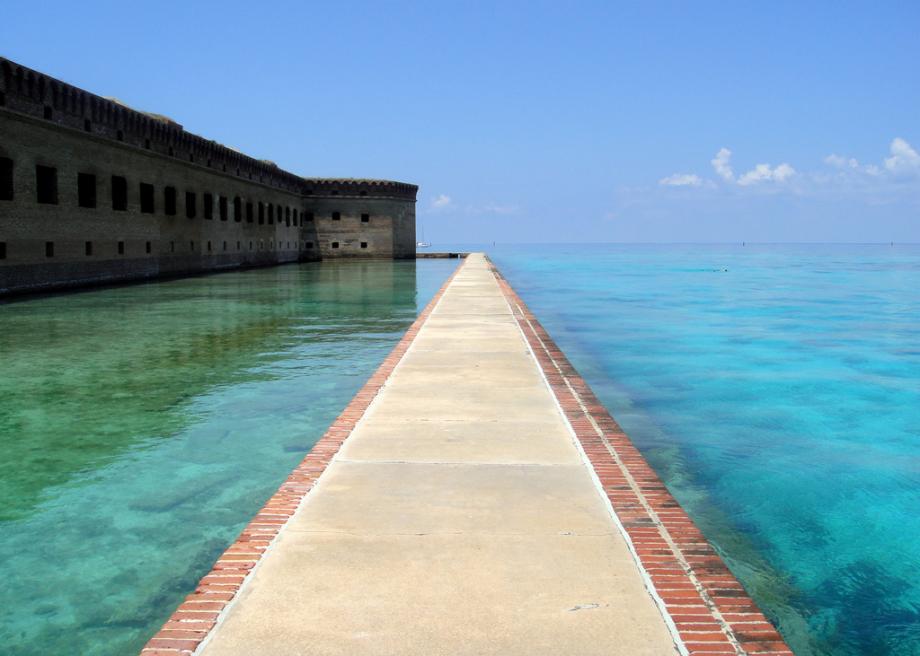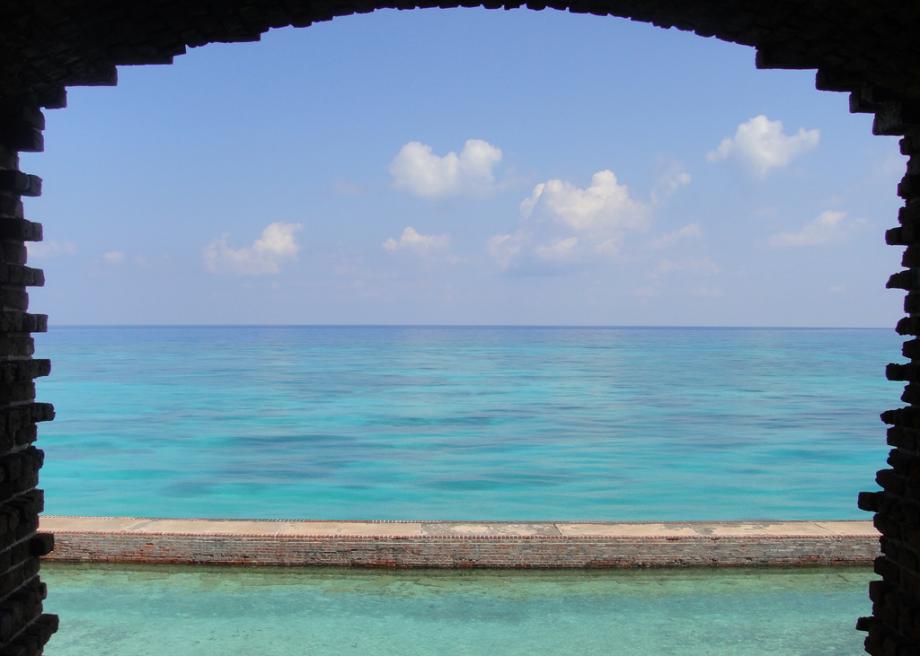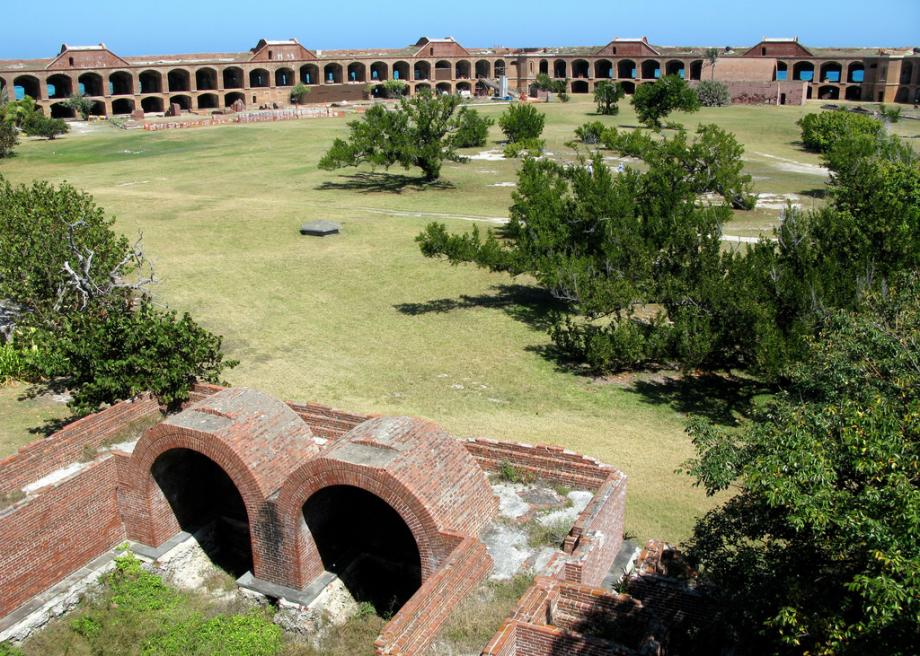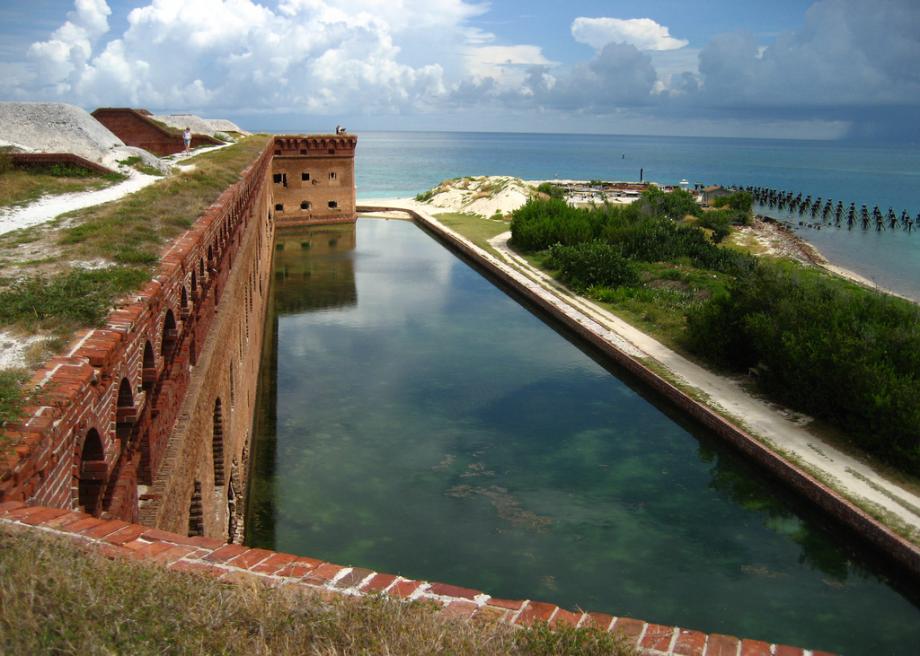Fort Jefferson: A 19th-Century Prison Located in Paradise
Atlas Obscura on Slate is a blog about the world's hidden wonders. Like us on Facebook, Tumblr, or follow us on Twitter @atlasobscura.
Seventy miles west of Key West is a huge hexagonal fortress that seems to float on the water. This is Fort Jefferson, a palatial yet sinister place designed to guard the piracy-prone shipping routes of the Caribbean.
Construction on Fort Jefferson began on a reef known as Garden Key in 1846. At the time of the Civil War, the fort was home to over 1,700 military and a few hundred civilian people. Soldiers who disgraced themselves by deserting the Union were sent to the military prison on Fort Jefferson. A few civilians were locked up there, too — the most common crime being robbery.
In 1865, a man of particular infamy arrived at the prison. His name, quite literally, was Mudd: Samuel Mudd, a doctor convicted of conspiracy in the assassination of President Lincoln. (John Wilkes Booth stopped by Mudd's house at four in the morning after breaking his leg while fleeing Ford's Theater. The doctor set and bandaged Booth's leg, then allowed the injured assassin to hole up in his spare bedroom.)
When Mudd and three fellow convicted conspirators landed at Fort Jefferson, there were about 600 prisoners living in open-air casements. In 1867, an outbreak of yellow fever swept through the fort, killing inmates and the prison doctor. Mudd became the new physician in charge and was able to limit further spread of the disease. In recognition of his efforts, Mudd was pardoned by President Johnson and left Fort Jefferson in 1869.
By 1874, the fort had become too expensive to maintain and was no longer a vital part of the maritime defense strategy. The army packed up and left.
Fort Jefferson is now part of the Dry Tortugas National Park, which encompasses seven small islands and a whole lot of turquoise-tinted water. You can visit the fort, see Mudd's old cell, and snorkel around the moat walls of Garden Key.
Need a maritime location for an evil lair? Read Allison Meier's roundup of isolated sea fortresses.
View Dry Tortugas National Park in a larger map

